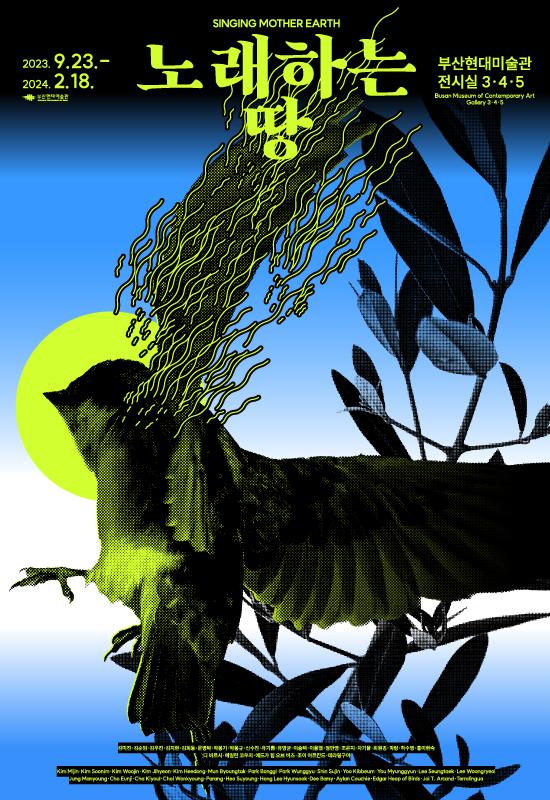Current
Singing Mother Earth
- Period
- ~
- Venue
- Artists
- Media
- Curator
- 내용
-

Singing Mother Earth attempts to reconnect with non-human nature by opening up the human enclosure to the outside world. Above all, the exhibition aims to flexibly and softly expand our anthropocentric worldview. To this end, the exhibition focuses on language. Language is perceived as uniquely human as the essence of human culture. However, this view limits the scope of language to humans. Is language a uniquely human ability? Renowned linguist Steven Roger Fischer (1947-) expands the definition of language to include any means of information exchange that connects the living world. When language is viewed in this light, it becomes an effective tool for mediating communication with non-humans, rather than a barrier that separates humans from animals. In How Forests Think (2013), anthropologist Eduardo Kohn (1968-) argues for the existence of a forest language (symbols) based on clues from the indigenous Amazonian word “tsupu” (the sound of hitting the water surface). He argues that we can relate to the living world through a process of breaking free of human conceptualized language and recognizing the non-symbolic signs of non-human nature.
Embracing Roger and Kohn’s revolutionary claims, the exhibition introduces the language of those who have been investing efforts to communicate with non-human nature. They are indigenous people who have lived in symbiosis with their local ecosystems and artists who have explored natural ecology in ways that transcend societal conventions. In the language of those who have sensitized the symbols of non-human nature and woven them into their lives or art, we can find a pathway to the broader world.
The exhibition takes the approach of creating six thematic words and pairing them with corresponding indigenous artworks, which is done with the idea that the revitalization of indigenous languages can be one way to address the Anthropocene crisis that we are facing. The indigenous languages featured include: Korean dialects that are relevant to the ecological environment; endangered languages of Native Americans and the Ainu people of Japan; language used by haenyeo in Jeju. The exhibition also showcases the work of Terralingua, an international non-governmental organization that protects \bio-cultural diversity around the world. Participating artists include artists, a musician, a novelist, a designer, domestic artists, and indigenous artists from various tribes of communities who have explored nature and ecology. Visualized in non-verbal symbols, their works will be interrelated to the world’s indigenous languages. They will serve as a bridge to the living world, opening up the human enclosure that was once firmly closed.
페이지 만족도 조사 및 자료관리 담당부서
자료관리 담당부서
- 학예연구실
- 051-220-7355
